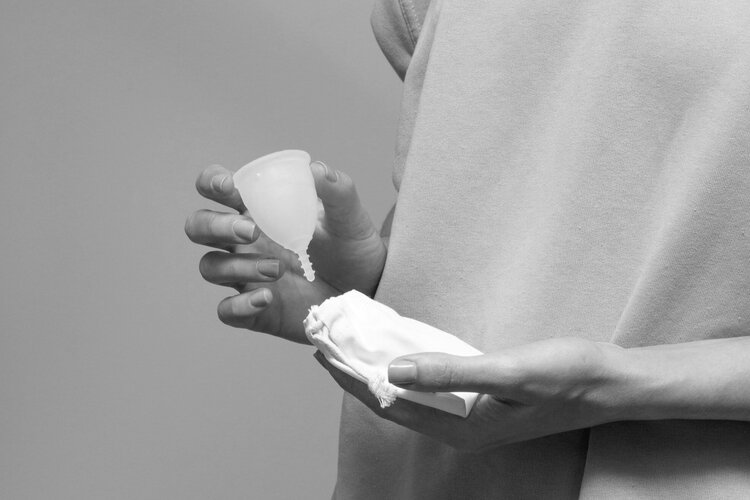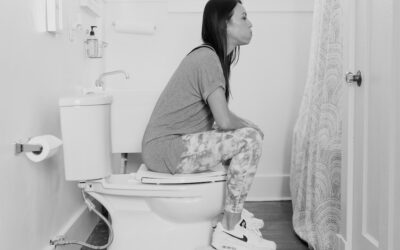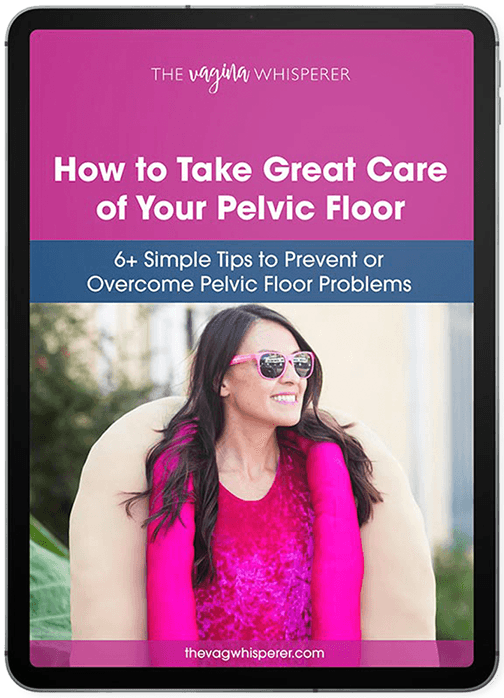A menstrual cup is a feminine hygiene product used as an alternative to tampons during your period. It can hold more blood than a tampon, and is reusable, making it more eco and financially friendly. But there is a bit of a learning curve in learning how to use a menstrual cup. Let’s dive in.
What is a Menstrual Cup?
Menstrual cups are typically made of silicone or rubber.
Unlike tampons, these cups collect blood rather than absorb it and therefore are less likely to cause infection.
A benefit to the menstrual cup is that it can hold more blood than a tampon can absorb. This means that a cup needs to be changed less frequently than a tampon. Most cups can be worn for up to 12 hours, if your flow allows.
Menstrual Cup Sizing
It may be difficult to find the right fit as each cup is slightly different.
Most menstrual cup brands have small and large cup sizes. Small sizes are recommended for women who are less than 30 years of age and/or have not been pregnant. Large sizes are recommended for women who have delivered vaginally and are over the age of 30.
If you have specific sizing concerns, or have concerns about your appropriateness for the use of a menstrual cup, it is recommended you consult your OB before use.
How To Use a Menstrual Cup
Insertion and removal of menstrual cups can be challenging for some. Removing the menstrual cup to empty it can get messy.
Inserting your menstrual cup
First, you need to wash your hands thoroughly and wet the rim of the cup with water. This will reduce friction with insertion and make application more comfortable.
Get in a comfortable position. You can prop your leg up on the tub or toilet, or sit on the toilet. You want to relax your muscles.
Start by folding the cup in half. With the rim facing upward, insert the cup into your vaginal opening.
Once the cup is inserted fully, release the cup. The cup should form a seal via suction that will prevent any leakage, and collect any menstrual blood.
If the cup has been inserted correctly, you should not feel it. You should also be able to perform daily activities, and move freely without discomfort or leakage.
To remove
To remove the cup, insert your index finger and thumb into your vaginal canal.
Pinch the base of the cup to fold it in half again to break the seal. Pull on the stem of the cup to remove. Once out, empty the cup into the toilet.
You should then rinse the cup with mild soap and warm water before re-inserting into the vaginal canal.
Pros and Cons of the Cup
Pros:
- Cost effectiveness
- Longer usage compared to tampons
- Reusable cups can last 6-10 years with proper care
Cons:
- Difficulty finding the right fit
- Insertion and removal can be messy
- Vaginal irritation
The Difference Between a Menstrual Disc and a Cup
Menstrual discs have a circular disc with edges that curve inward. They can fold easily into the vagina. Menstrual discs sit lower in the vaginal canal than their cup counterparts. They’re more comfortable to wear while engaging in sports or other physical exercise.
In contrast, menstrual cups are bell-shaped. They have a stem at the bottom. You’ll insert menstrual cups higher up in the vaginal canal than discs. This makes reaching and removing them a little more difficult. The shapes of the disc and cup make them fit differently in different bodies, which is why some people prefer one over the other.
Both menstrual discs and cups are effective for period management. Pick which one is best for you based on comfort level, lifestyle activities, size preference, etc. Ultimately, a disc or cup might not be the right feminine hygiene product for you. They are both good options for those who are looking for other options besides tampons.
__________________________________________________________________________________________________________
Interested in more tips on how to prevent or overcome Pelvic Floor Problems?
Download this free guide for some simple, do-able, totally-not-weird tips to take better care of your down there.
_________________________________________________________________________________________________________
Some links may be affiliate links. The products we recommend are products we use or recommend to clients.





